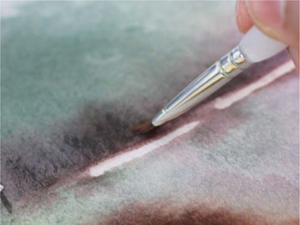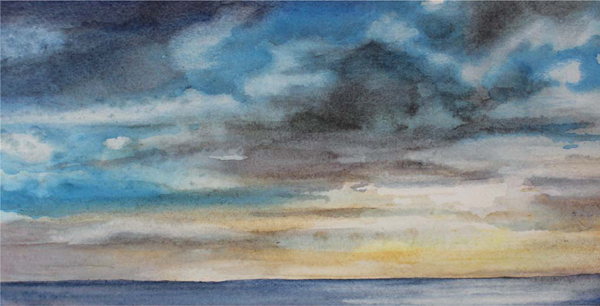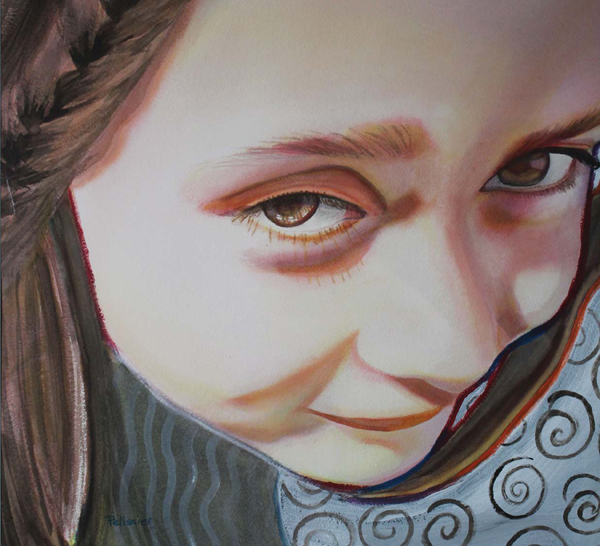
Drybrush Technique Close-Up
In this example, a dry brush technique is used to add contrast (by way of a dark brown paint) to the trees on the horizon.
Drybrushing is a technique that builds up textures and colors gradually. To paint with a dry brush, you need to apply paint on your brush with very little water and then rub that dry brush against your paper. The peaks of the paper will pick up the pigments but not the valleys, so the texture of your paper will influence how the drybrushing looks.
Drybrushing will work better on regular paper than on Yupo paper. The paper needs a bit of tooth to pick up the pigments from the brush, and Yupo paper is too slick.
I like to use the drybrush technique to add details, like hair on a portrait, the effect of light reflected on the surface of water, or to subtly increase the contrast in select areas of a painting. Some watercolor painters are very successful at applying this technique to slowly build up colors on a whole painting. It might work for you if you are not too attached to the free-flowing quality of the experience of painting with watercolor.

In this example, a dry brush technique is used to add contrast (by way of a dark brown paint) to the trees on the horizon.

The drybrush technique has been used in the light reflection on the water to get a shimmering effect.

A BIRD’S EYE VIEW OF LOUISE
Watercolor and mixed media on paper
26" × 26" (66cm × 66cm)
This is a mixed-media portrait of my daughter. The face was painted by layering colors (see Chapter 3, Demonstration: Paint Skin Tones Using a Layering Technique), and then I added mixed media in the background (acrylic and pastel contouring). Hair can be tricky to paint in a realistic manner with watercolor; a drybrush technique is a good option because you can render the fine texture of hair with greater control.